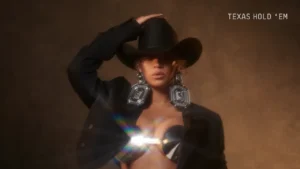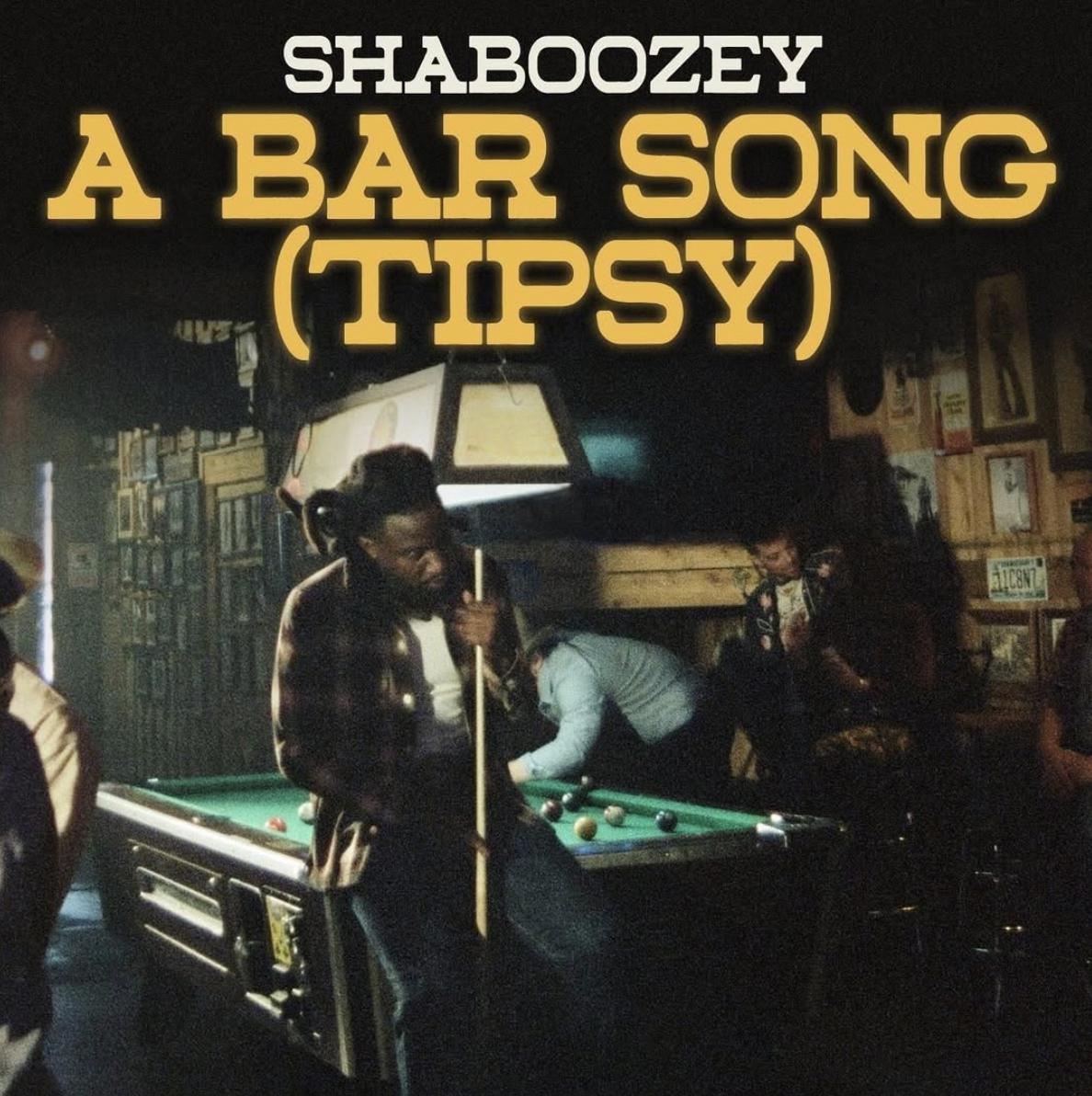 When Beyoncé dropped “Texas Hold ’Em” in 2024, it didn’t just feel like another hit—it felt like a seismic shift. The Queen Bey of R&B, hip-hop, and pop suddenly traded her chrome microphones and couture for cowboy boots and banjos. It was the kind of bold genre leap that only an artist of her magnitude could make work, and she didn’t just dabble in country—she dominated it. “Texas Hold ’Em” wasn’t a novelty or a crossover gimmick. It was a reclamation—a statement that Black artistry and Southern identity have always belonged in country music, no matter how much Nashville history might pretend otherwise. The track marked a new chapter in Beyoncé’s career and set the internet ablaze with its fusion of swagger, twang, and spiritual homecoming.
When Beyoncé dropped “Texas Hold ’Em” in 2024, it didn’t just feel like another hit—it felt like a seismic shift. The Queen Bey of R&B, hip-hop, and pop suddenly traded her chrome microphones and couture for cowboy boots and banjos. It was the kind of bold genre leap that only an artist of her magnitude could make work, and she didn’t just dabble in country—she dominated it. “Texas Hold ’Em” wasn’t a novelty or a crossover gimmick. It was a reclamation—a statement that Black artistry and Southern identity have always belonged in country music, no matter how much Nashville history might pretend otherwise. The track marked a new chapter in Beyoncé’s career and set the internet ablaze with its fusion of swagger, twang, and spiritual homecoming.
The timing was perfect. In 2024, American pop culture was obsessed with nostalgia for the South—cowboy aesthetics, Americana fashion, and the open-road mythos were all surging back into the spotlight. Yet Beyoncé’s version of that myth was different: it was modern, inclusive, and unapologetically proud. “Texas Hold ’Em” didn’t just expand the boundaries of her sound—it redrew the map of American music.
The Song That Broke the Internet—and Nashville
“Texas Hold ’Em” was released on February 11, 2024, during the Super Bowl weekend—a Beyoncé trademark move that turned a quiet Sunday into a cultural earthquake. Dropping alongside her second single “16 Carriages,” it introduced Act II of her ambitious genre trilogy, following the disco-dance odyssey of Renaissance. But this time, she went country. The opening seconds of “Texas Hold ’Em” were a curveball: plucky banjo strings, a boot-stomping rhythm, and Beyoncé’s warm southern drawl singing, “This ain’t Texas / Ain’t no hold ’em.”
It wasn’t parody. It wasn’t irony. It was pure craftsmanship. The song blended elements of Appalachian bluegrass, zydeco, and modern country-pop, all filtered through Beyoncé’s singular lens of power and confidence. The result? A track that felt timeless and futuristic all at once.
Produced with Nathan Chapman (best known for his work with Taylor Swift) and Raphael Saadiq, the song layered acoustic banjo and mandolin with a subtle trap-inspired rhythm. The production didn’t chase Nashville radio—it created its own lane, a cross-country highway connecting Memphis, New Orleans, and Houston.
Within 24 hours, “Texas Hold ’Em” shot straight to #1 on the iTunes chart in more than a dozen countries. Then came the milestone: Beyoncé became the first Black woman to top Billboard’s Hot Country Songs chart. It was a moment decades in the making—a direct challenge to a genre that’s often struggled with inclusion and representation.
A Sound Rooted in Heritage
To understand the genius of “Texas Hold ’Em,” you have to understand what Beyoncé was reclaiming. Country music didn’t start in Nashville—it started in the rural South, shaped by Black musicians whose banjos and fiddles told stories of migration, hardship, and celebration. Beyoncé’s Texas roots run deep, and on this track, she pulls from the soil of her own upbringing in Houston.
The song’s rhythm has echoes of the ring shout, an African American spiritual tradition that predates gospel. The banjo itself, played beautifully throughout the track, is an African instrument by origin, brought to America by enslaved people. When Beyoncé twirls around that banjo groove and sings of freedom and flirtation, she’s not borrowing from country—she’s reclaiming it.
Lines like “It’s a real live boogie and a real live hoedown” feel both playful and defiant, turning the historically white-coded imagery of the honky-tonk into something joyous and inclusive. Beyoncé’s voice—soulful, confident, and drenched in charisma—rides the song’s galloping beat with ease. She sounds like a woman both at home and on a mission.
Lyrical Layers: Cards on the Table
At first listen, “Texas Hold ’Em” sounds like a party track. Its clapping rhythm and call-and-response chorus make it perfect for dance floors and tailgate parties alike. But beneath the surface, the song plays with metaphor and identity in classic Beyoncé fashion.
“Texas Hold ’Em” isn’t just about the card game—it’s about power dynamics, risk, and agency. When she sings, “When I put my cards on the table, I’ll show you what I’m worth,” it’s both a flirtatious line and a declaration of self-confidence. She’s challenging anyone—be it a lover, a critic, or an entire industry—to bet against her.
There’s an undeniable wink in the song’s tone. Beyoncé is using the language of poker to talk about control. In country’s traditional gender roles, women are often portrayed as heartbreakers, victims, or dreamers. Beyoncé flips the script. She’s the dealer, the gambler, and the house—all at once.
And while “Texas Hold ’Em” is steeped in Americana, its spirit is thoroughly modern. The verses are short and rhythmic, almost hip-hop in structure, and the chorus explodes like an anthem. The balance between genre homage and pop architecture is what makes it so addictive.
The Visual Story: Black Cowboys Ride Again
When the music video for “Texas Hold ’Em” dropped, it cemented Beyoncé’s place as a cultural architect. She didn’t just sing about country life—she reimagined it. Dressed in rhinestone denim, fringed leather, and a wide-brimmed hat, she paid tribute to the forgotten legacy of Black cowboys, who made up an estimated one in four of all cowboys in the American West.
The video was shot with cinematic flair, blending the dusty warmth of old Westerns with the neon glow of Beyoncé’s modern aesthetic. Horses gallop across desert plains. Line dancers groove in saloons. There’s laughter, love, and liberation. But beneath the glitz, it’s a love letter to Black Southern pride—a vision of what country can look like when everyone’s invited to the dance floor.
The imagery resonated deeply, especially among fans who had long felt excluded from the mainstream country narrative. Social media erupted with stories, photos, and videos of Black cowboys and cowgirls celebrating the moment. Hashtags like #BeyonceCountry and #BlackCountryRenaissance trended for days.
From “Formation” to “Frontier”
“Texas Hold ’Em” isn’t an isolated experiment—it’s part of a larger evolution. Ever since Lemonade in 2016, Beyoncé has woven a tapestry of American identity through her music. “Formation” tackled Black Southern culture and resilience. Homecoming redefined the HBCU experience. Renaissance celebrated the legacy of queer Black dance music. Now, Act II and “Texas Hold ’Em” turn the lens toward country, Americana, and folk traditions.
In doing so, Beyoncé doesn’t abandon pop; she deepens it. Each act in her trilogy is both a sonic exploration and a cultural reclamation. Country music has long been haunted by its own history of erasure, and Beyoncé forces it to confront that history head-on—without preaching, without bitterness, but with grace and groove.
Her performance at the 2024 Country Music Awards was the defining moment of this era. Backed by a live band of Black instrumentalists and dancers, Beyoncé performed “Texas Hold ’Em” with enough power to make the walls of Nashville tremble. Even the most skeptical country purists couldn’t deny it: she didn’t just belong there—she owned it.
Reception: Critics, Cowboys, and the Beyhive
Reactions to “Texas Hold ’Em” were as loud and colorful as the song itself. Critics hailed it as “genre-defining,” “revolutionary,” and “a modern-day barn burner.” Even veteran country artists like Dolly Parton and Willie Nelson publicly praised Beyoncé for bringing country music back into mainstream conversation.
But what made the song truly groundbreaking was how it united people. Fans who might’ve never ventured into the world of banjos and fiddles suddenly found themselves humming along. Conversely, country fans who’d never engaged with Beyoncé’s music discovered a new appreciation for her storytelling and musicianship.
There was also pushback—predictably, from corners of country traditionalism resistant to change. But even that criticism revealed the song’s impact. “Texas Hold ’Em” wasn’t designed to play it safe; it was designed to make people talk. And in 2024, few songs started as many necessary conversations as this one.
Streaming numbers were massive. TikTok line dances, country remixes, and fan covers flooded the internet. Line-dancing classes across the South began incorporating the song into their sets. It became an anthem not just for Beyoncé fans, but for anyone who’s ever felt left out of the country club.
Musicianship and Mastery
Beneath all the hype, “Texas Hold ’Em” holds up musically. It’s deceptively simple but incredibly well-crafted. The song clocks in under four minutes, yet it manages to build a full sonic world. The banjo riff—played by Rhiannon Giddens, an acclaimed Black folk musician—is infectious, looping like a hypnotic chant. The percussion bounces with playful handclaps, and Beyoncé’s voice floats effortlessly over the top.
What’s impressive is her vocal restraint. She doesn’t belt like she does on “Halo” or “Love On Top.” Instead, she slides into a relaxed, country lilt that feels completely natural. It’s a reminder that Beyoncé isn’t just a powerhouse vocalist—she’s a storyteller who knows how to serve the song.
The harmonies, too, deserve praise. Layered gospel-style backing vocals give the song a sense of community, echoing the joy of a live dancehall or backyard jam. Every note, every instrument feels intentional, a celebration of craftsmanship and culture.
A Cultural Checkmate
By naming the song “Texas Hold ’Em,” Beyoncé plays with dual meanings—both the literal card game and the metaphorical one. The phrase becomes a declaration: she’s showing her hand, holding her ground, and reshuffling the deck of American music.
This isn’t the first time an artist has fused R&B and country—think Ray Charles’s Modern Sounds in Country and Western Music or Lil Nas X’s “Old Town Road.” But Beyoncé’s take feels definitive. It’s not parody, and it’s not pastiche. It’s authenticity meeting innovation.
The power of “Texas Hold ’Em” lies in how effortlessly it bridges worlds. It’s an anthem for the rodeo and the runway, the barn dance and the block party. It belongs everywhere—and in that universality lies its genius.
Legacy and the Long Game
A year after its release, “Texas Hold ’Em” already feels like a classic. It didn’t just earn Beyoncé awards—it expanded her mythology. The song signaled that her creative fire is still burning bright, that she’s not content to rest on past achievements. More importantly, it re-centered Black Southern identity in a genre that has too often forgotten its roots.
When future generations study the evolution of American music, “Texas Hold ’Em” will be remembered as a cultural inflection point—the moment when country music’s gate finally swung open wide.
Final Deal
“Texas Hold ’Em” isn’t just a song—it’s a full-blown statement. It’s fun, fierce, and profoundly important. Beyoncé didn’t just sing country; she redefined it. With a single track, she united the rodeo with the runway, the church with the juke joint, the old South with the new America.
She played her cards fearlessly—and walked away with the whole table.


